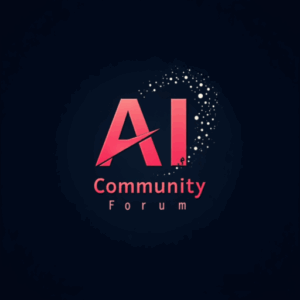The global education system needs a revamp, and it’s a widely acknowledged sentiment, particularly with the advent of various tools and technologies. Besides, there’s a common frustration about how classrooms have remained static for years and need radical changes.
But what if our imagination of a tech-driven classroom in the future is misconceived in many ways? Besides, what kind of AI system does the education industry truly need, and why does it extend beyond just building powerful, resource-rich, and accurate tools?
What is a Great Classroom?
In a podcast episode on Unsupervised Learning, a show hosted by Redpoint Ventures, Salman Khan, founder of Khan Academy, one of the most popular free e-learning platforms, said, “I’d like to think that most classrooms [in future] will look like what great classrooms already look like today.”
Build Reliable GenAI Interactions Consistent, Accurate and Predictable Models
Get Demo
Khan’s suggestion of what a ‘great classroom’ looks like is key to understanding how AI can truly impact education. The classroom is where students aren’t passively listening to the lecture. “They’re engaged, they’re interacting with each other….the teacher is walking around working with the students getting them to do interesting things,” added Khan. He suggests that the role of AI systems may be key to creating highly engaging and interactive environments.
The teachers responsible for creating these kinds of environments need to spend a lot of time making creative lesson plans and observing the classroom to intuitively understand what students might need, while spending time grading papers, writing progress reports, and so on. Khan calls these abilities ‘superpowers.’
Enabling more and more teachers to manage their classrooms better, providing more insights on the students’ performance, improving interactivity, and granting them more ‘superpowers’ is where AI can come into the picture, believes Khan.
Essentially, Khan dismisses the picture of a future classroom where students simply stare at screens on a laptop. “Right now people try to think very binary, where technology is you’re just staring at a screen and non-technology as you’re running around in the real world,” he added.
He also added that the AI will not necessarily exist inside a laptop or in a classroom. “There’s no reason why [AI] can’t be ambient, and it’s just observing the classroom and seeing what’s going on,” he added.
However, Khan in no way indicates that future classrooms should be averse to student-facing technology. He thinks of a sci-fi classroom where virtual reality and augmented reality take centre stage in learning. “Who knows, you’re going to be able to go into simulations, be part of virtual worlds, go back to ancient Rome,” said Khan.
Curiosity is the Bottleneck
More importantly, current tools—conversation-based agents and systems—may not entirely fit the bill because they might not be as proactive as needed.
“If I walked into any math classroom and said ‘Hey, I’m a great tutor here…if you have any questions, come ask me,’ there’s probably going to be about 10 to 15 percent of kids who do it, and we’re seeing that with AI,” said Khan.
He expressed scepticism about AI’s current readiness to operate independently and facilitate learning for the majority of people. “I don’t think AI is quite ready yet to be by itself, and drive learning for most,” he said.
A curious individual could dedicate half an hour each night to ChatGPT, and if they’re adept at prompting and questioning, they can learn significantly. However, that doesn’t apply to most students, Khan indicated, advocating for the development of more proactive AI solutions for education, which he is personally creating with Khanmigo.
Thus, this indicates that resources and powerful tools are only solving a part of the problem in the education system—the bigger portion is driving students’ curiosity.
However, several research studies have already shown tangible results regarding the sample sizes that use ChatGPT.
When Used Right, ChatGPT Works Wonders
A recent study suggested that ChatGPT has a significant positive impact on students’ learning performance and a moderate positive impact on learning perception and fostering higher-order thinking. This analysis was based on 51 research articles published between November 2022 and February 2025
The study also outlined methods to integrate ChatGPT into the education system effectively. For instance, the authors suggest that ChatGPT must be combined with educational frameworks to guide students, as the tool isn’t inherently creative or critical by itself.
In alignment with Khan’s suggestion about students’ lack of curiosity, the study also said, “In middle schools, teachers can use ChatGPT to maintain students’ interest while improving their understanding and memory of complex concepts. In universities, teachers can guide students to actively use ChatGPT in relevant courses to provide personalised learning suggestions to improve their learning.”
This suggests employing ChatGPT to create customised experiences for students, as different individuals may not generate the same level of interest and curiosity from a standardised syllabus or curriculum.
Several experts in the industry have sided with the above study. Ethan Mollick, a professor at The Wharton School, said on X, “This paper confirms my belief that figuring out how to effectively employ LLMs at scale in education is one of the most important research problems of the day (and no, the answer is not ‘replace teachers with AI’).”
And what about the teachers in a classroom? “They’ll become curiosity facilitators and help students find/create novel, real-world examples to show they’ve grasped the course material,” said Kavitha Ghai, CEO of Nectir, in a discussion that followed on Mollick’s post on X.



